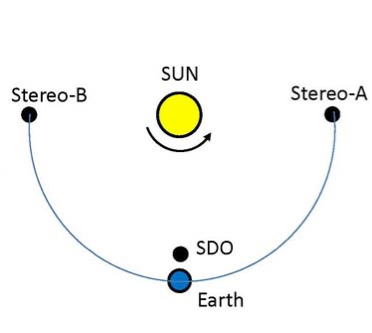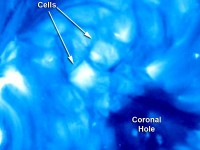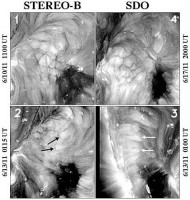The locations of STEREO–A, STEREO–B and SDO relative to the sun and Earth in 2011. (Credit: NRL )
Home The locations of STEREO–A, STEREO–B and SDO relative to the sun and Earth in 2011. (Credit: NRL ) The locations of STEREO–A, STEREO–B and SDO relative to the sun and Earth in 2011. (Credit: NRL )




